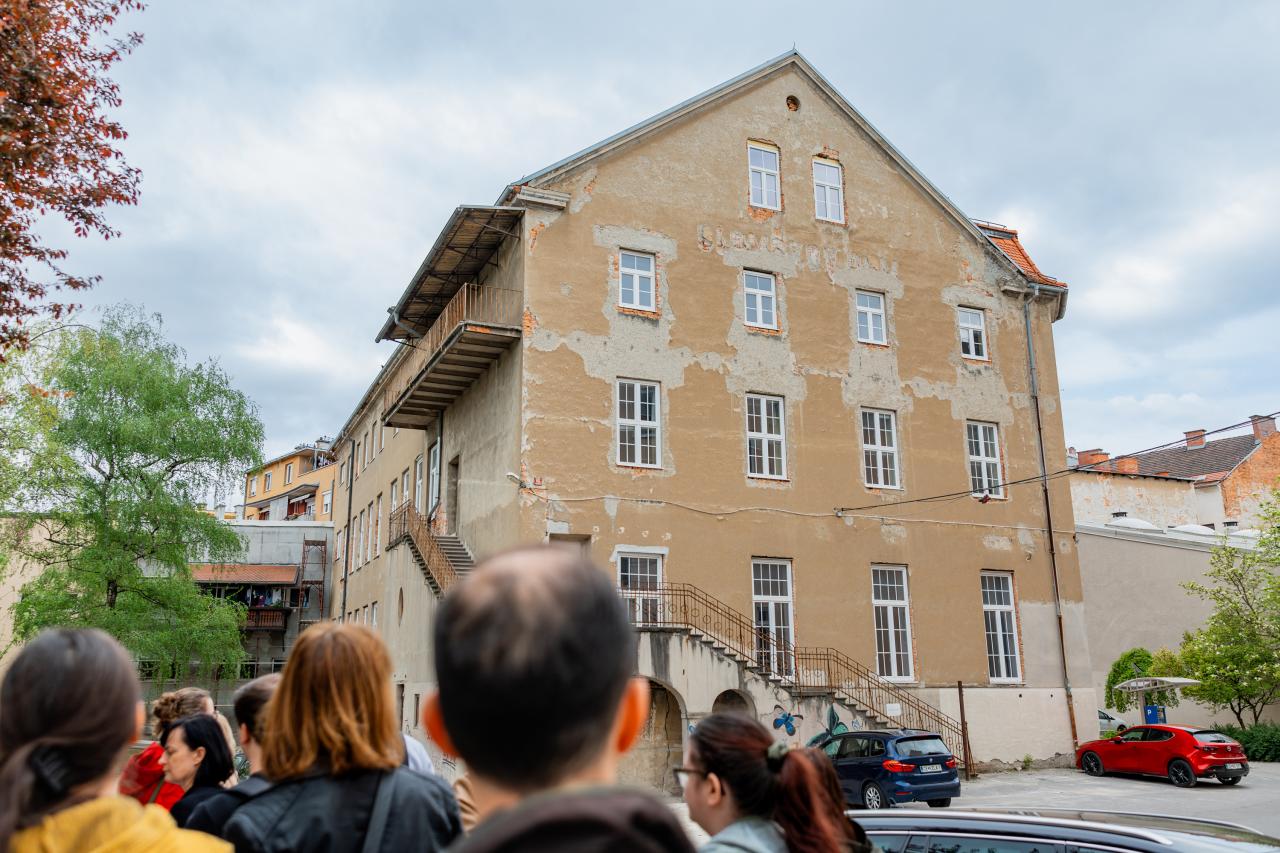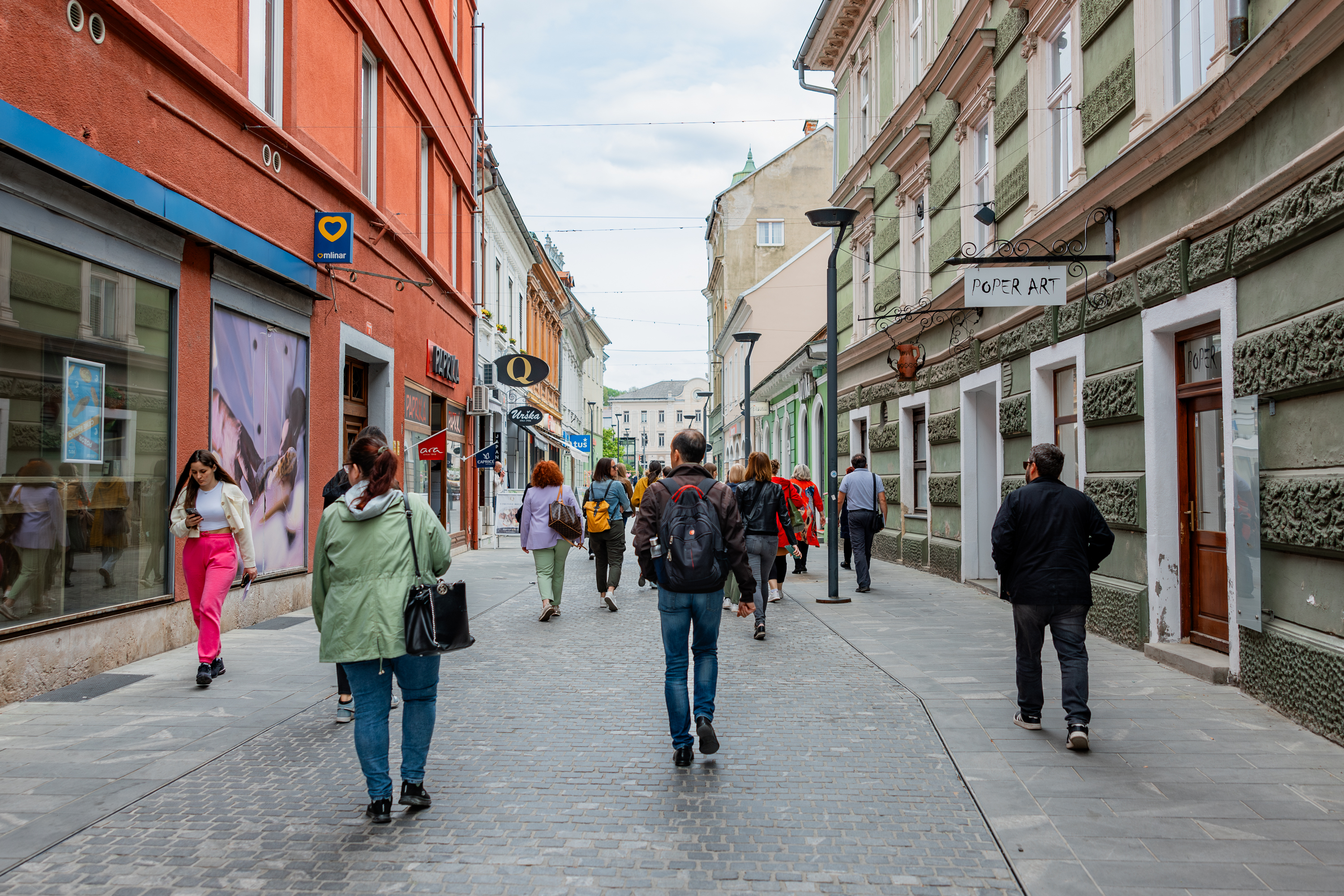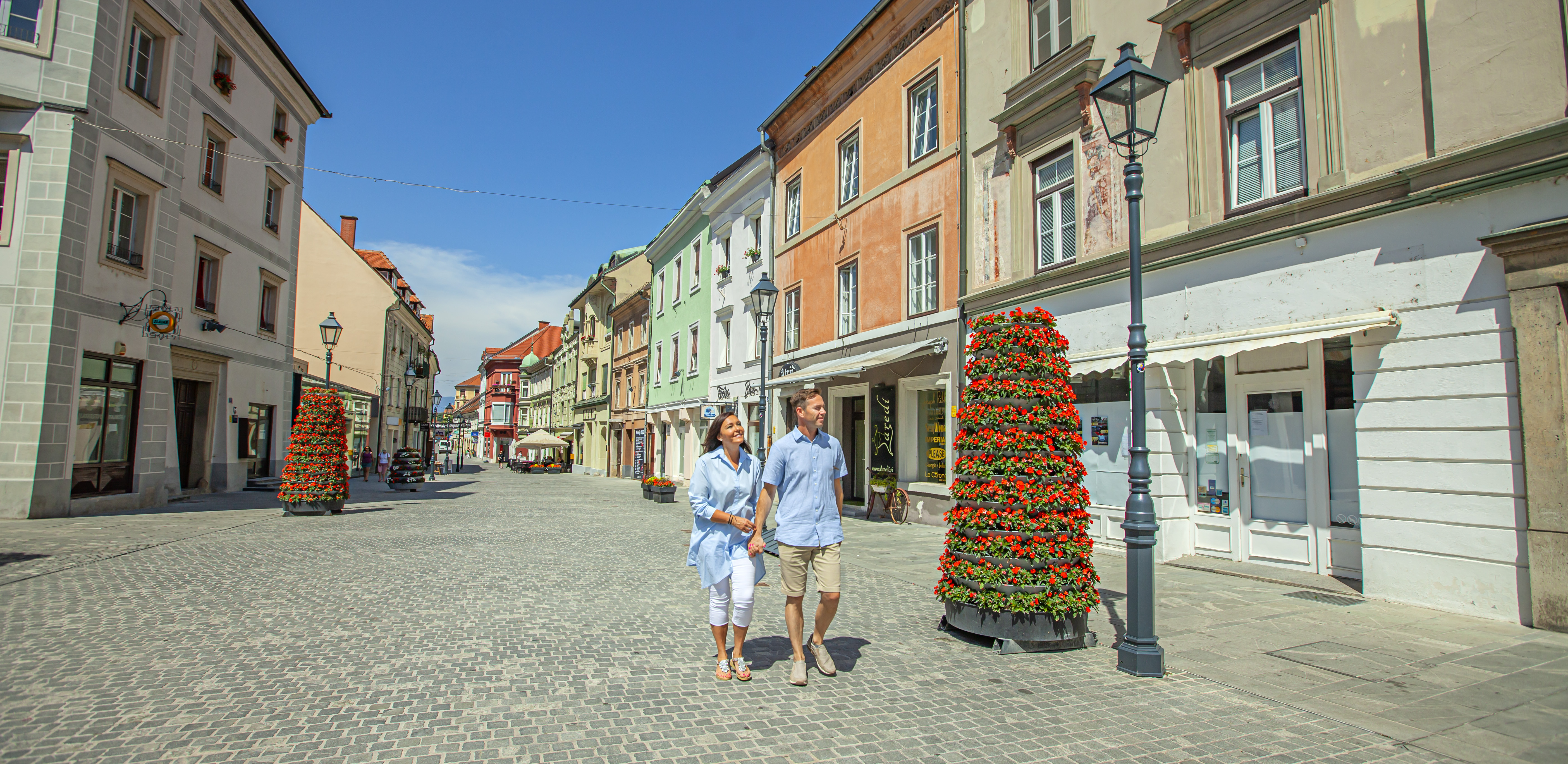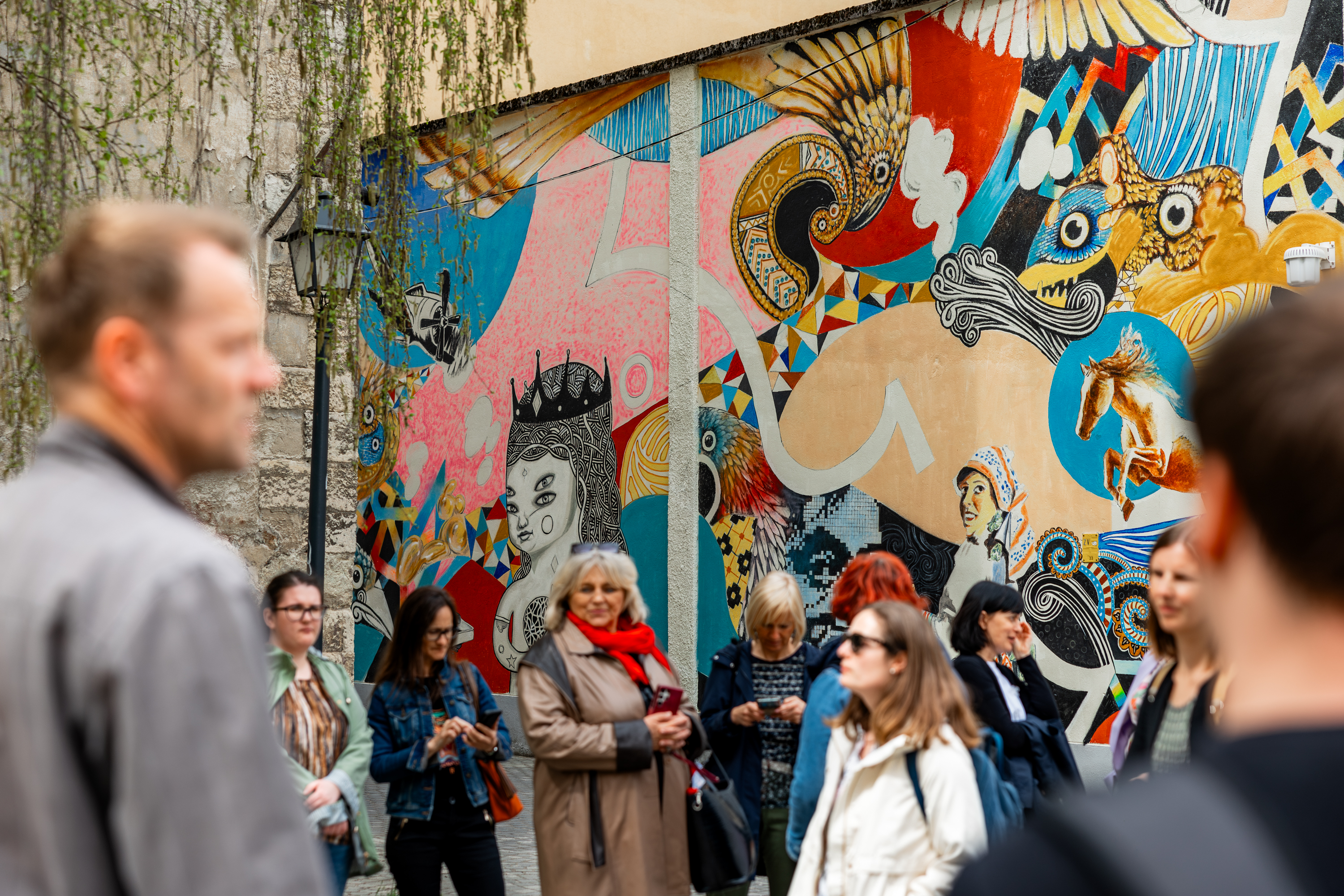1. Active city centre management
Celje started to develop city centre management in 2012, when it recruited a city manager in the mayor's office. In 2015, they adopted the Celje City Centre Development Strategy. It is implemented through a number of events, campaigns and festivals in the city centre to promote and connect local businesses and organisations. In 2017, the management of the city centre was taken over by the Celeia Celje Institute for Cultural Events and Tourism. Most of the activities to revitalise the town centre are now carried out in cooperation between the municipality and the Celeia Institute.
2. Closing streets for cars and opening them for people
One of city's priorities is to limit car access in the city centre and allow more space for other uses. Some streets and squares have already been closed to car traffic. In the future, they would also like to redesign Prešernova Street, which is currently closed every year during European Mobility Week.
Additionally, they are redirecting traffic from the city centre with the Centralka sustainable mobility app and city card, which brings together information on local public transport, bike sharing system, and parking. To divert car traffic to external car parks, they have also installed displays to inform about the number of available spaces in parking areas.
3. Co-financing the renovation of facades and roofs
Through a recurring call for proposals, the City of Celje is co-financing the renovation of facades and roofs in the city centre at a rate of 50% of the investment. Priority is given to businesses, owners of buildings under conservation protection, and sacral heritage. In the last 9 years this call for proposals has already helped to renovate 45 buildings.
4. Unified look of restaurant terraces
Restaurant terraces in the city centre of Celje are regulated by the Ordinance on the Use of Public Areas. Among other things it specifies what can be used as shades for terraces, how flowerpots can be installed, that the area of a terrace must not be fenced off, and that there must be enough space for adequate pedestrian passage alongside the terrace. In this way, the municipality ensures that terraces are laid out in a coherent manner and do not restrict movement and other uses of the public space.
5. Streets full of flowers
The city pays much attention to ornamental planting that is visually consistent throughout the city centre. Themed ambient decorations are also being developed, which are placed both in the public space, e.g. on the cables strung between buildings, and in the windows of vacant shops. They also try to encourage residents to get involved. For example, last year they offered city centre residents free flower seedlings to place on windowsills overlooking the historic centre.
6. Regulating advertising in public space
Advertising in public space is regulated by the Ordinance on Advertising in the City of Celje, which specifically sets out rules in the city centre.
The Ordinance limits the objects and devices that can be used for advertising, allowing existing poster poles and portable street billboards, the use of which is also limited. Only one billboard per business unit is allowed, only at the opening of a business or on a special occasion. Advertising on the walls of buildings shall only be permitted under conditions of the heritage protection authority, provided that the facade is not a facade with architecturally important elements. Advertising on public surfaces and structural elements of public infrastructure shall be permitted only for the purpose of cultural and other public events, for a limited period only. Other, more aggressive forms of advertising, such as digital displays, are not permitted.
7. Business premises management
The City of Celje manages more than 200 business premises. Almost none of them are empty, as rents are much lower than commercial rents and contracts are long-term. They encourage private owners of long-vacant premises to rent them out to new tenants. In some cases, arrangements are made with the owners for the city to use the shop windows for decorations and exhibitions or for events – for example, in December, when there are many events and visitors in the city. The municipality is also interested in buying commercial premises overlooking the streets of the so-called city cross, especially those that have been vacant for a long time and degrade the city's image. To further address the problem of empty spaces in the city centre, an interactive map of all empty spaces, including privately owned ones, has been produced.
8. Supporting local entrepreneurs
Local entrepreneurs interested in opening a business in the city centre are offered support. They help them with setting up their business space, i.e. renovating it if necessary, and subsidising the rent for a certain period of time. They also offer financial support for setting up a business, for investments in inventory, equipment or training, co-financing for self-employment and for tourism infrastructure, such as terrace furniture.
9. Let's Meet in the City gift voucher
Many vendors, service providers and public institutions in the city centre are part of the Let's Meet in the City gift voucher. The gift vouchers are worth €10 and are redeemable for one year from the date of purchase. Currently, 55 providers can redeem the voucher. The vouchers can be used for purchases at clothing, footwear, and fashion accessory shops, grocery stores, bookshops, hairdressers and other craftsmen, bars and restaurants, drugstores, the city pharmacy, the Museum of Contemporary History and the Celje Regional Museum, and the Tourist Information Centre. All participating providers have signs on their doors and a list is available on a website, where vouchers can also be purchased.
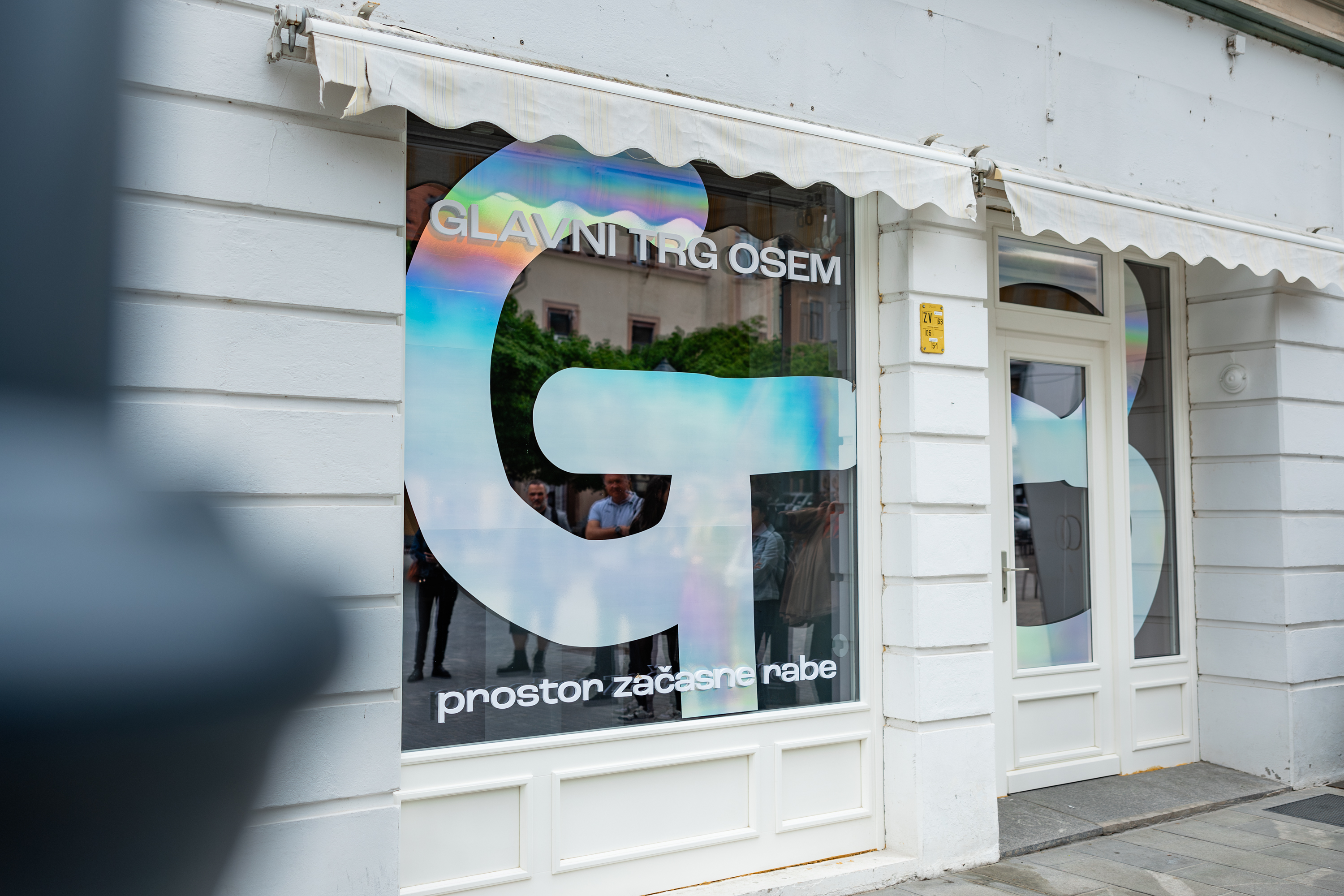 10. GT8 – Glavni trg 8
10. GT8 – Glavni trg 8
A space for community has been created on the main square (Glavni trg). It can be rented on a short-term basis by citizens, associations, and organisations. The space is 145 m2 in size, the fee for temporary use of the space is €25 net or €30.50 gross per day and is rented out through a call for proposals from the city centre management office at the Celje Celea Institute. It is intended for temporary use for projects and events of associations, institutions, and other organisations and citizens or companies, the content of which relates to various aspects of city life.
These can be pop-up events, longer-term projects such as exhibitions or recurring events and projects. They aim is to promote original and high-quality artistic production, the presentation of artistic and other projects that are important for the promotion of Celje, to increase the accessibility of public cultural goods to the public and to encourage the presentation of creative projects from other fields (entrepreneurship, sport, education, youth activities, intergenerational projects, etc.).
11. Supporting artists
One of the ways Celje supports artists is by giving them an option of renting run-down shops as production space on Gosposka Street in the city centre, free of charge. The area has become known as the Artists' Quarter. The municipality rents out the space through a public tender and provides all the necessary infrastructure, while the artists pay the running costs. In return for using the space, the artists give their artwork to the municipality once a year for the value of the rent. The municipality uses the artworks as protocol gifts. The area has become a meeting place for artists and a place for a variety of artistic and cultural events that attract many visitors to the quarter.
12. Murals
In autumn 2022, the first mural was painted in Celje. Many cities use murals to revitalise their city centres. The first mural in Celje was created as a result of a local artist applying to a cultural open call by the city. The mural combines recognisable characters from the history of Celje and Slovenia, which the painter has woven into a fantasy landscape and added contemporary accents. In autumn 2023, a second mural was created, this time in the form of a giant mechanical fish, which is meant to raise questions on ecological and technological challenges. Murals brighten up hidden facades, add playfulness to the city and can strengthen local identity.
13. K67 Kiosk as a focal point for urban action
In 2024, the City of Celje, in cooperation with the Celje School Centre, refurbished one of the kiosks by architect and designer Saša J. Mächtig, which used to be present in all Slovenian cities. The kiosk serves as an info point of urban events and a meeting and networking place. It was first placed in the city centre, but its place is not permanent, as they want it to travel to different neighbourhoods and local communities in the future.
14. Creative centre Kajuhov dom
The municipality has detected that the creative community currently lacks suitable spaces for work. Therefore, Kajuhov dom, a big three-storey building build in the 1920s formerly used as a student dormitory and secondary school but recently vacant will be converted into an Urban Culture Centre. The building will be renovated, and it will serve as a new production and practice space for independent creative cultural production and amateur culture in about two years. However, before the renovation starts in October 2024, the space can be rented free of charge on a temporary basis for various cultural and creative events such as performances, exhibitions, workshops, conferences, pop-up shops, courses, and trainings.
The City of Celje and the Celeia Celje Institute are making a real effort to make the city centre lively and attractive. And they are still planning a few more activities as part of the URBACT Cities@Heart network. Among other things, they want to strengthen support for local entrepreneurs and make the city centre even more diverse, attractive, and accessible to all.
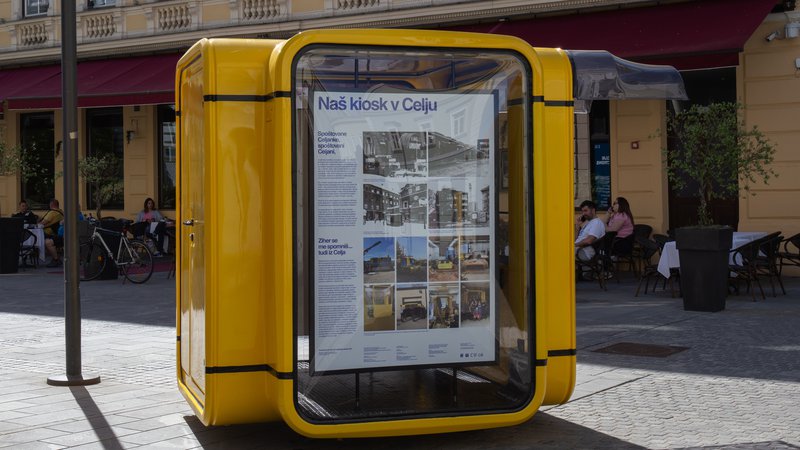
Article was prepared by Petra Očkerl and Nina Plevnik, NUP Slovenia
Photos: Robi Valenti, Lana Požlep, Celeia Celje institute archive

